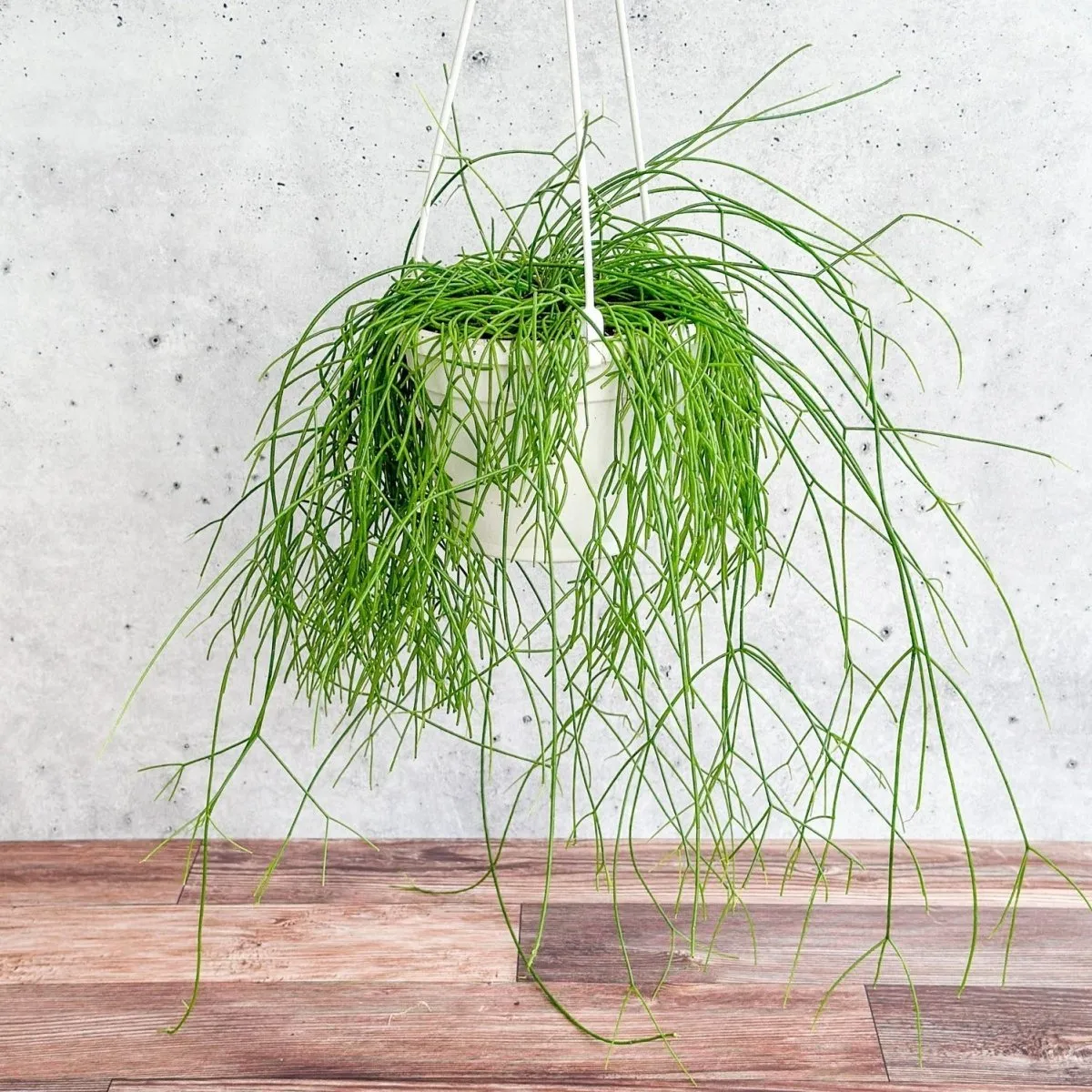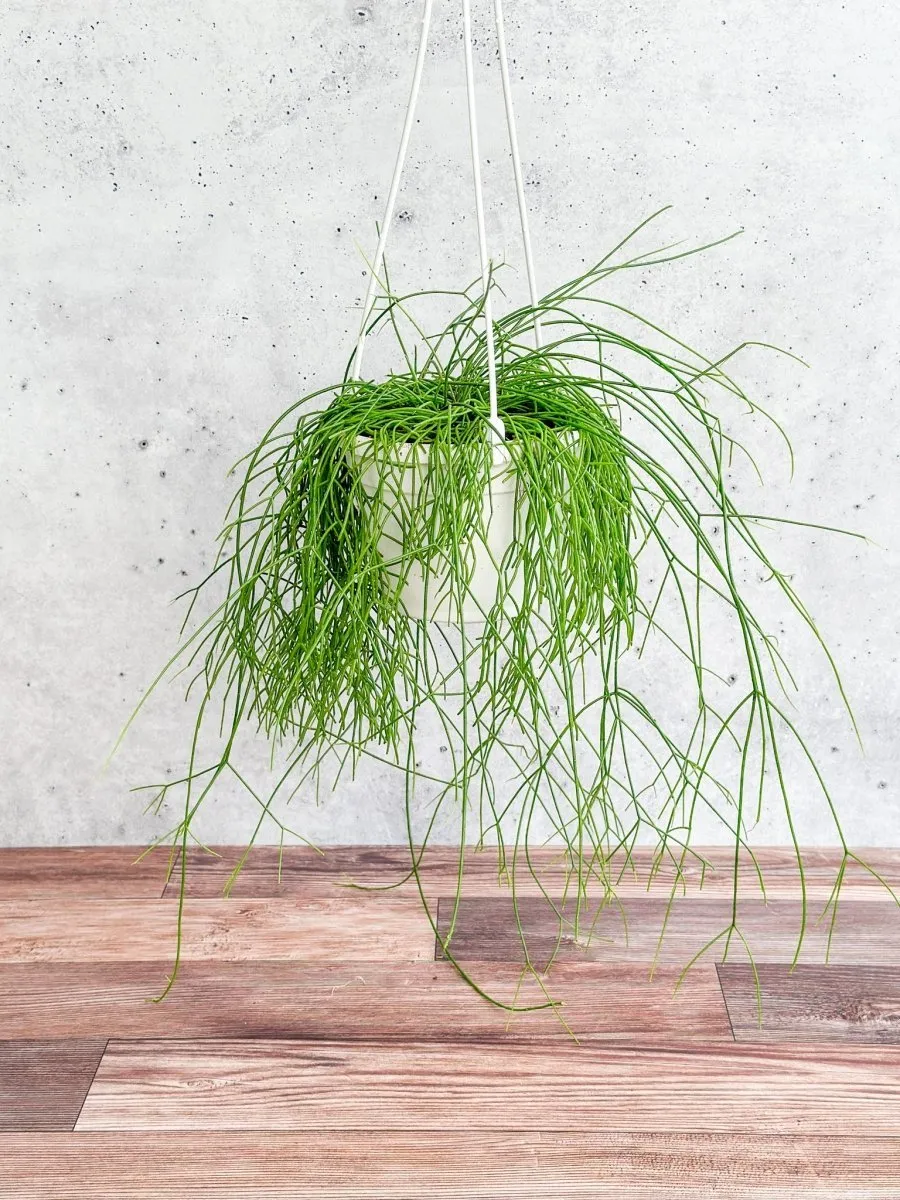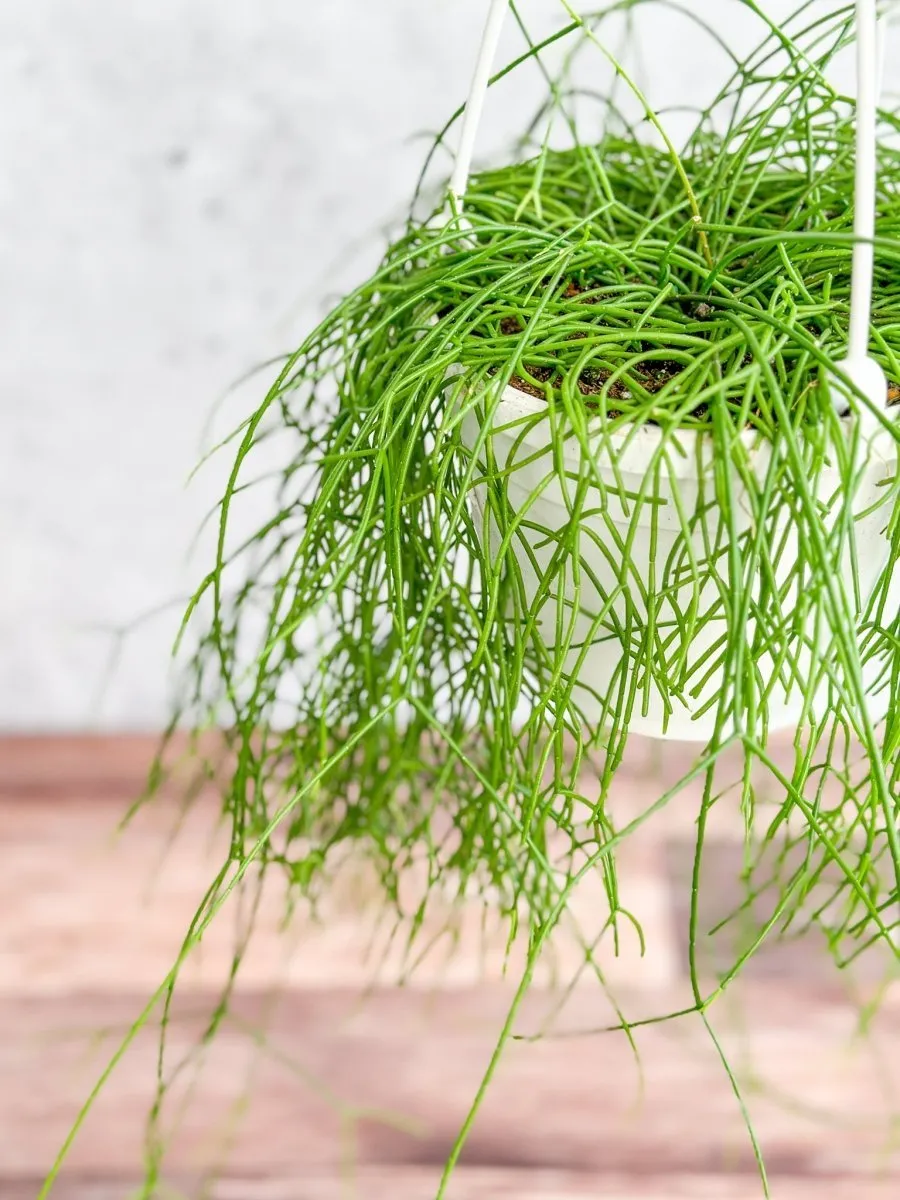Discover the charm of the Rhipsalis burchellii, a rare and captivating cactus that will add elegance to any indoor space. With its delicate, trailing stems and unique form, this stunning plant transforms any corner into a lush, green oasis. Perfect for hanging planters or shelves, the Rhipsalis burchellii drapes beautifully, creating a cascading curtain of greenery that adds life and movement to your home décor. This rare cactus thrives in bright, indirect light and requires minimal care, making it an ideal addition for both beginner plant enthusiasts and seasoned collectors.
Mistletoe Cactus Plant Profile
- Scientific Name: Rhipsalis burchellii
- Common Name: Rhipsalis, Mistletoe Cactus
- Family: Cactaceae
- Native Range: Central and Southern America
Mistletoe Cactus Care Guide
- Light: Prefers bright, indirect light, Best plant at least a few feet removed from a window. Can tolerate minimal light for extended periods of time
- Water: Prefer lightly moist but not wet soil. Water when soil dry only. Cut back on watering during fall and winter.
- Humidity: Average
- Temperature: Above 50F
- Pruning: Prune as needed to remove brown or dead leaves and control growth.
-
Feeding: Fertilize with a half dilution of cactus food during spring and summer, once per month at most.
-
Toxicity: Non-toxic to humans and pets. However, with all plants, we recommend you exercise caution with children and pets.
Fun Fact About Rhipsalis: The Cloud Cactus!
Although a cactus, Rhipsalis burchellii is actually native to tropical rainforests! Its soft, feathery foliage grows from trees in the wild, earning it the nickname "Cloud Cactus" for its light, airy look.
History of the Rhipsalis Burchellii
The Rhipsalis burchellii is a unique member of the Cactaceae family, native to the rainforests of Central and Southern America. Unlike most cacti, which are desert dwellers, this plant thrives in humid, tropical climates where it grows as an epiphyte on trees. Rhipsalis is one of the only cacti naturally found outside of the Americas, having spread across parts of Africa and Asia. Known for its ability to grow in shaded environments, this cactus was historically used in traditional medicine and is still admired for its beauty and resilience in modern plant collections.

 Cart(
Cart(












